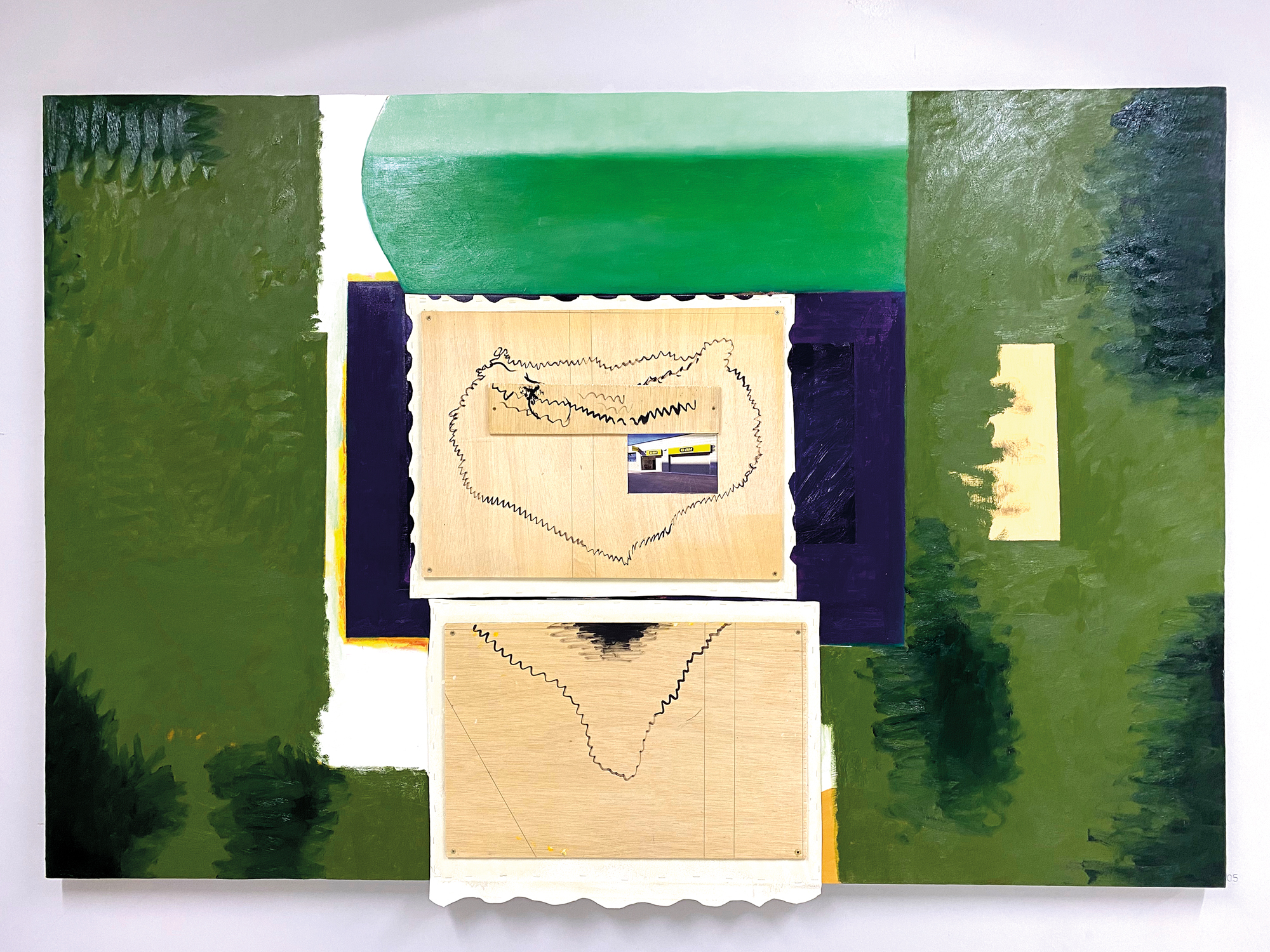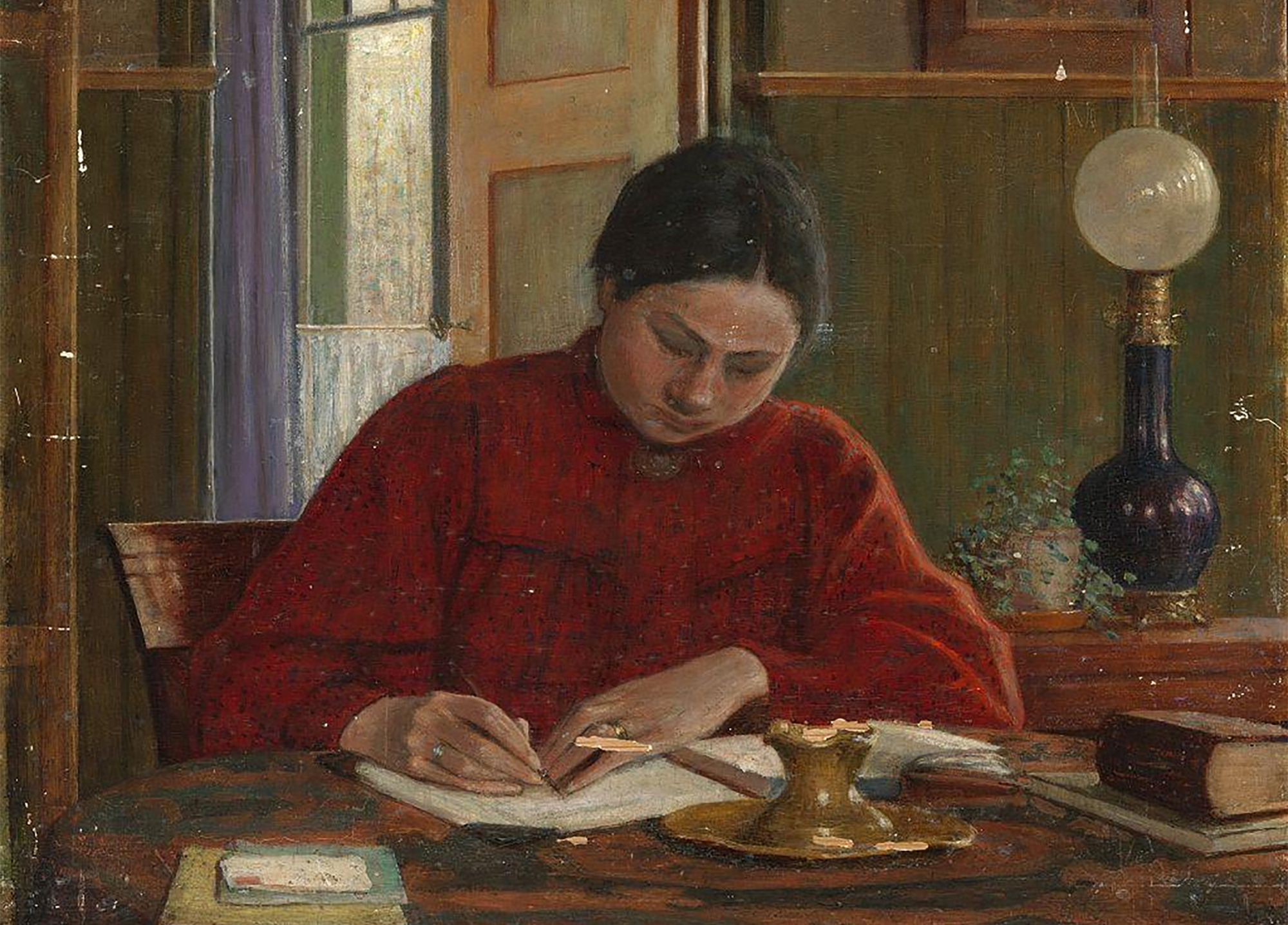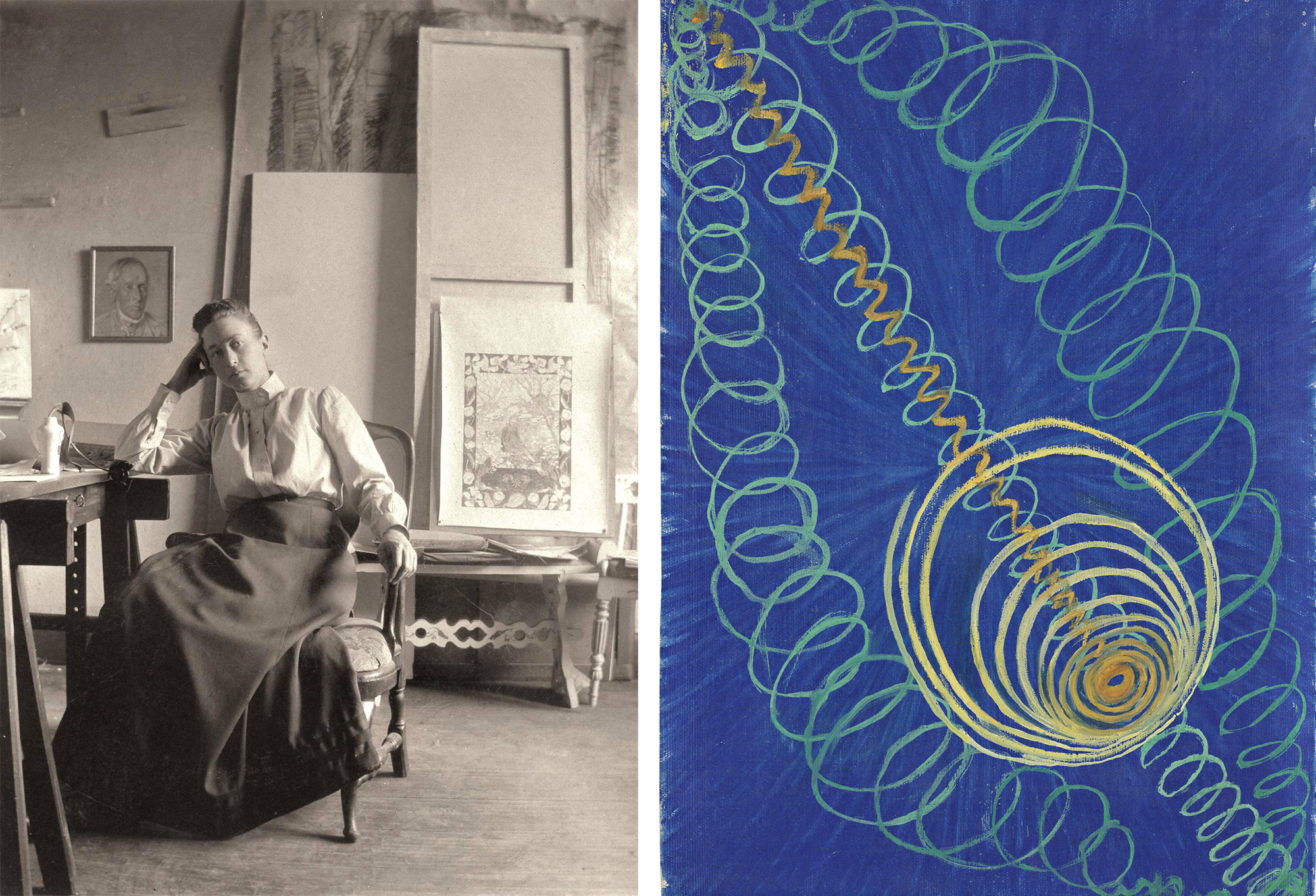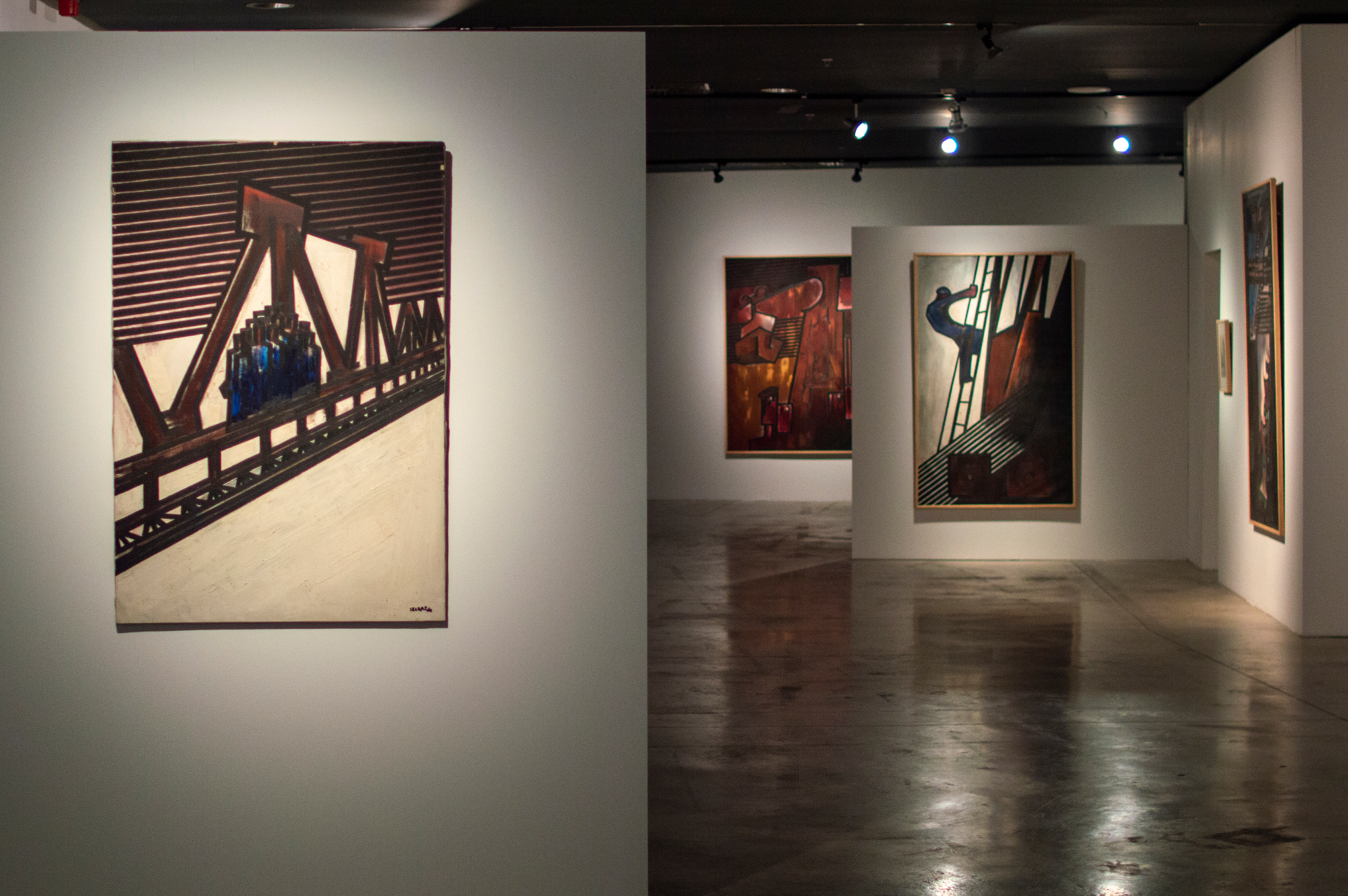About the poetics of the supermarket
- I'm looking for a hacienda in downtown Bilbao. Number 11 of Alameda Street in San Mamés says that there is a bluish street corner in which there is an unusual art gallery. I am a little lost between two shops in the blue background of El Callejón Zollo. Until I've seen Molcris written. I pass the anecdote and I descend down the narrow and deep street, meet the blue basses. It seems a lie that this is Bilbao. I see two window doors, an elongated cacti, an squeezed plant hanging down, and at its center four large golden letters: A I R E. As soon as I entered my head into the air gallery, I noticed the paintings of Iñaki Imaz.

The first thing I thought was that to see the latest works by Iñaki Imaz (San Sebastian, 1965) there can be no more suitable place. On the one hand, the location of the gallery, in this noisy and commercial center of Bilbao, coincides fully with the title of the exhibition: Feeding, lingerie, bazaar [Feeding, lingerie, bazaar]. On the other hand, it is curious the Aire gallery, which works far from the intentions of the other commercial galleries, and it is the meeting point of many students and professors of the Faculty of Fine Arts of Bilbao, so showing here the work of Imaz makes a lot of sense. Imaz is a painter and professor at the Faculty of Fine Arts at the UPV. For decades, his pictorial work has been exhibited there and here, especially in Euskal Herria, and both his way of doing and his way of understanding painting have made it a teacher for many generations.
Imaz has been active since the late 1980s, especially in painting, although he has also made three-dimensional pieces. In the 1990s it was an active part of the artistic context of Arteleku, where in 2005 Magh and the magnet, among others. He led a workshop to work artistic activity from the experience of painting. In the Zehar magazine Arteleku edited, his contributions have been published many times, many of them criticism of exhibitions and painting. Our work has been seen in the gallery Carreras Múgica, in the Alhóndiga de Bilbao, in the gallery Alegría, and in the exhibition Arenzana, Imaz, Intxausti, Lote, Peral, organized by Tabakalera de Donostia in 2016. The exhibition allowed to contemplate the works of the 80's and 90's of these five artists of the same generation together with the new productions, which allowed to draw attention to the evolution of their works. Imaz's painting is seemingly abstract and has an ironic tone, and I would say that his style is already easy to recognize and has left a mark on some of the context artists.
.jpg)
The air gallery mainly organizes painting exhibitions, many of which have a format of collective exposure. Fito Ramírez-Escudero opened Aire in 2018, enabling a space to show students their works. Ramírez, artist and professor, has long been linked to the Faculty of Fine Arts and for four years, his students, former and university professors have the opportunity to show their works in this gallery. Perhaps one of the most interesting things about the Air Gallery is that intergenerational relations occur very naturally and it is about talking about the practice of art, about exchanging knowledge, projects and collaborations. It is a place of great charm, as the space is informal and a testing place for the first exhibitions for many artists. And initiatives that allow us to show and encourage the work of young artists in a selfless way are always welcome.
.jpg)
I've been fascinated by the street canton of Zollo to visit the exhibition in Imaz. The space, as always, highly conditions the experience of what you are going to see and on this occasion I have traveled with great curiosity about the small space. The gallery has a floor plan of a house or local, with numerous drapes and here and is a hallway the umbilical cord that connects these small rooms. The colorful canvas of imaz splashes the gray walls of the gallery and it seemed to me that on the first quick walk I made the yellow color stand out. Almost all canvases have some yellow hue. On the entrance couch there are two girls who talk to each other about a project they must present in class. I've approached them and given them a catalog they told me they're paintings inspired by BM supermarkets. What a hot yellow color!
Therefore, the starting point to start painting these canvases could be a very non-transcendental action such as weekly shopping. Given this reason, Imaz has repeated, combined and modified the logo colors of these food stores in large canvas. Each frame is a world and a suggestive exercise is to rise to each and draw attention to the nuances: the choice of colors, the overlap of forms, the repetition of motives, the technique used and the mind and the desire behind each. The artist has included in some paintings photographs of the nude brick buildings of the supermarket, as well as bags, brochures of offers or other elements identifiable with the imaginary of these shops. There are also overlays and some paintings include smaller frames in a formal assembly, always in rectangular format. The strokes, the masses of color, the suggestive forms are building a universe of their own that leads to the almost disappearance of this original idea.
Imaz's painting is seemingly abstract and has an ironic tone, and I would say its style is already quite recognizable
There are 23 paintings suspended in space, very close to each other, until they form a mass of colors. Continuing with the idea of assembly, we see a painting made up of fragments of lanps -- black, gray, brown -- that are placed on the entrances of the house. In fact, there is another group of tables in which the imaginary of the bazaar or the market becomes more present. Imaz paints the carpets and the hallways as if they were wooden nets, sometimes with a thousand details, proposing at other times an exercise of abstraction. In these large paintings stand out the pink colors and the lilas. Finally, there are fashionable lingerie paintings, large, colorful, humorous, made with a unique technique.
I am grateful for the statement. At the end of the street corner, I've approached the Molcris frame store on curiosity, and the life that the gallery and this store give to the narrow street is beautiful. Look up and a woman hangs her underwear on the clothesline giving the alley. The image has reminded me of a painting I have seen inside.
Bussum (Netherlands), 15 November 1891. Johanna Bonger (1862-1925) wrote in his journal: “For a year and a half I was the happiest woman on earth. It was a long and wonderful dream, the most beautiful one I could dream of. And then came this terrible suffering.” She wrote... [+]
























